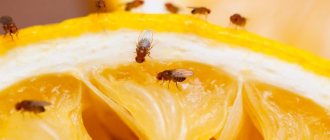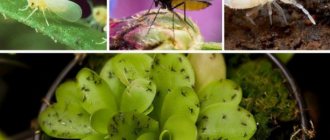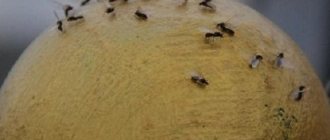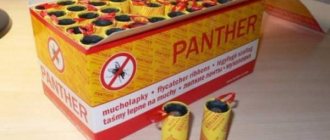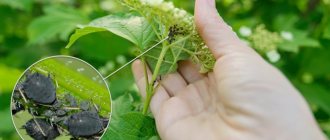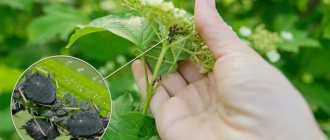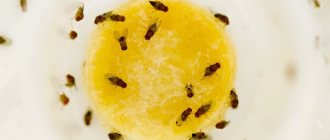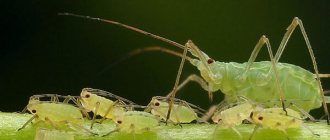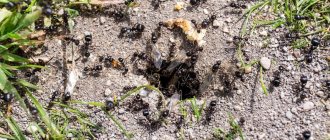Wine midges or fruit flies are known to everyone because of their prevalence. They got their name because they are attracted to the smell of wine that comes from rotting fruit. In the house, they can most often be seen in the kitchen, since all food products are concentrated there. Having settled in an apartment, the small, ubiquitous wine flies are a significant nuisance to the residents. In a short period of time, their numbers become such that they are found: on house plants, curtains, in the trash can, on any product not removed in time, in jars of honey or jam, they strive to get into your morning coffee and, apparently, consider themselves full-fledged masters in your kitchen. Because of this, many are concerned with the question - where do they come from and how to get rid of wine midges in the house?
How to remove fruit flies using plants?
We know where the annoying midges come from in our home, and also that they also feed on the sap of indoor plants. Therefore, in the fight against them in the apartment, you can use predator plants that digest insects caught in fragrant traps. They are very easy to care for, they are small in size, safe for humans, but they cope with fruit flies and other insects more effectively than imported chemicals. In addition, it is quite interesting to observe this process where the flower closes/opens whenever there is prey inside.
Quite often, the soil in potted flowers becomes the habitat of midges in an apartment. They are attracted to damp soil and rotting leaves. There are cases when the soil sold in stores is contaminated with wine midge larvae. If you are in doubt about the quality of the soil, you can bake it in the oven before using it for its intended purpose. Try not to overwater the plants, and throw away fallen leaves and flowers.
Despite the fact that fruit flies do not bite, their presence in the kitchen and on food is always unpleasant. The recipes have been empirically tested and work effectively.
The simplest method of controlling fruit flies is sticky tape. They can be hung in any room where flying annoying insects usually gather: in the bathroom, kitchen, greenhouse and even in a beer store. There will definitely not be any difficulties with their purchase: the tapes are available in almost any hardware store.
If regular cleaning and sticky tapes do not help, you need to move on to more effective methods - the use of special insecticidal preparations. They are sold in spray form. The most popular are “Raptor”, “Raid”, “Combat”, “Dichlorvos”, “Hexachloran”. They contain various components that destroy insects. The product must be sprayed in the house. It is recommended to close all windows and doors and wait a few hours. First you need to remove all the people and put away the food. At the end, after treatment, ventilate the room. Instructions for use are written on aerosol containers, so you should always read them.
In the apartment and at the dacha, you can also use special traps, which can be purchased at a hardware store. Raptor is very popular. The principle of its operation is as follows: insects flock to the aroma that is emitted by a container of liquid and stick to the inside of the trap in the form of a house. To use such a trap, you must first assemble it yourself:
- 1. Remove the cap from the can.
- 2. Place the trap on top of the container with the sticky surface inward.
Drosophila also reproduce in flowers, or more precisely, in the soil for them.
This is an ideal environment for flies. To find larvae in the soil, you need to dig up the soil with a small spatula or toothpick. If small worms are found, then it is necessary to use insecticides to protect the plants. “Aktellik”, “Fitoverm” will do. In more advanced cases, when the larvae have infested the pot, it is necessary to transplant the flower into a new container, completely replacing the soil.
If fruit flies live in the bathroom or kitchen sink, you can remove them using boiling water. They need to treat the space regularly. It is recommended to use such products as “Domestos”, “Mr. Muscle”, “Mole”.
Description of the insect
Drosophila are also called fruit flies. These insects have long settled near humans, for the reason that humans are an inexhaustible source of food for them. Midges eat spoiled fruits, flower nectar, plant debris and juice of domestic plants. All this is available in large quantities near people.
Externally, fruit flies are very small midges. They do not live long and breed very actively, developing in a warm environment from an egg to an adult insect in just ten days. One female has the ability to lay up to 400 eggs. Therefore, wine flies can quickly colonize the entire territory in which they have settled. Midge eggs are laid in spoiled berries and fruits. The hatched larvae penetrate deep into the product and pupate there. Already on the second day after hatching, the female is already able to lay eggs.
Important! These insects do not cause any particular harm to humans - they do not bite, do not suck blood, and certainly are not carriers of diseases. The main harm from them is annoying flickering in the apartment and absorption of food. Theoretically, eating foods contaminated with fly larvae can only result in intestinal upset.
Folk remedies against midges
Among folk remedies, the most popular are traps. Making them is quite simple: pour a little juice, jam, compote into a glass jar, and insert a paper cone on top, tip down. It is necessary to ensure that there is a small hole at the end of the cone. Attracted by the smell of fermented juice, midges fly into the jar, but can no longer get out.
It is convenient to make a bait-trap from a plastic cup (you can use a yogurt cup). Also, a little compote and juice are poured onto the bottom, and cling film is pulled on top. You need to make several holes in the film using a needle and leave it in the place where the midges are found. Having climbed through the holes into the glass, insects will not be able to leave the trap. You can also try this method: pour a little water into a jar, add apple juice or vinegar, and then a few drops of dishwashing detergent. By leaving the jar in a place where midges accumulate, you will catch many insects that will flock to the smell of vinegar or juice, but because of the dishwashing detergent, they will not be able to get out of the jar.
In country life, if you don’t have a jar or plastic glass at hand, you can find a way out by trying to get rid of these insects. Pieces of sour apples are left in a regular plastic bag for a day so that they spoil a little. Having made sure that a lot of midges have collected on the apples, the bag is quickly tied and thrown away.
Rave reviews from buyers of ultrasonic traps guarantee protection against domestic midges: regularly turning on the device, you can protect your home from insect infestation.
If midges have settled in indoor flowers growing in the kitchen, try sticking a match with the head down; experienced gardeners have been using this remedy for many years.
A small number of midges can be dealt with by vacuuming them up.
And there are situations when, having gone on vacation, you accidentally forgot a few bananas on the table or other fruits, and upon returning you found a whole swarm of midges in the kitchen. In this case, it is better to close the windows and doors and turn on a regular mosquito fumigator. Success is guaranteed, all that remains is to ventilate the room well and clean the room.
Tip: regular adhesive tape against flies also works effectively, and if you smear it with wine, the midges will instantly flock to your favorite smell.
Preventive measures
Following simple rules will allow you to forget what fruit flies look like. The house should be in order, vegetables and fruits should be stored in the refrigerator, and the risk of annoying midges breeding in the home will be minimized.
Other important rules:
wash dishes regularly, do not accumulate glasses, spoons, plates on the table or in the sink; throw out garbage in a timely manner, especially in the warm season, when there is a lot of fresh fruits and vegetables; It is good to wring out rags in the kitchen and bathroom; do not store rotten foods at home, especially grapes, peaches, bananas, apples, melons; water the plants as needed, do not create dampness in the flowerpot and the plate under it; When using tea leaves as fertilizer, replace the layer in the pot in time. Rotting tea leaves against a background of high humidity are an ideal habitat for annoying midges; The cat's litter box should always be clean, as should pet feeding bowls. Drosophila, deprived of food, will definitely leave an inhospitable home; When identifying annoying “neighbors”, do not postpone the fight against insects
It is important to remember: midges always stay in flocks, and when there is an abundance of food, they quickly flock to the smell.
The appearance of Drosophila flies at home can be prevented if you keep order and care for your plants correctly and on time. In case of invasion of tiny insects, homemade traps and folk recipes will help.
Video - review of how to get rid of fruit flies in the house:
Attention! Only today!
The simplest method of controlling fruit flies is sticky tape. They can be hung in any room where flying annoying insects usually gather: in the bathroom, kitchen, greenhouse and even in a beer store. There will definitely not be any difficulties with their purchase: the tapes are available in almost any hardware store.
If regular cleaning and sticky tapes do not help, you need to move on to more effective methods - the use of special insecticidal preparations. They are sold in spray form. The most popular are “Raptor”, “Raid”, “Combat”, “Dichlorvos”, “Hexachloran”. They contain various components that destroy insects. The product must be sprayed in the house. It is recommended to close all windows and doors and wait a few hours. First you need to remove all the people and put away the food. At the end, after treatment, ventilate the room. Instructions for use are written on aerosol containers, so you should always read them.
In the apartment and at the dacha, you can also use special traps, which can be purchased at a hardware store. Raptor is very popular. The principle of its operation is as follows: insects flock to the aroma that is emitted by a container of liquid and stick to the inside of the trap in the form of a house. To use such a trap, you must first assemble it yourself:
- 1. Remove the cap from the can.
- 2. Place the trap on top of the container with the sticky surface inward.
Drosophila also reproduce in flowers, or more precisely, in the soil for them.
This is an ideal environment for flies. To find larvae in the soil, you need to dig up the soil with a small spatula or toothpick. If small worms are found, then it is necessary to use insecticides to protect the plants. “Aktellik”, “Fitoverm” will do. In more advanced cases, when the larvae have infested the pot, it is necessary to transplant the flower into a new container, completely replacing the soil.
If fruit flies live in the bathroom or kitchen sink, you can remove them using boiling water. They need to treat the space regularly. It is recommended to use such products as “Domestos”, “Mr. Muscle”, “Mole”.
Video
To get rid of fruit flies, various methods and means are used. To learn more about fighting methods, watch the following videos:
About the author:
Found a mistake? Select the text with the mouse and click:
Do you know that:
Before removing various stains from clothing, you need to find out how safe the selected solvent is for the fabric itself. It is applied in a small amount to an inconspicuous area of the item from the inside out for 5-10 minutes. If the material retains its structure and color, you can move on to stains.
Where do midges (drosophila) come from in an apartment?
The presence of midges in the house can be a real disaster for the owners, because they multiply at a breakneck pace. Most often, they like to reproduce in fruits that sit in a warm room and begin to rot. Female fruit flies lay eggs in favorable conditions when the process of rotting fruit begins to occur.
Indoor plants are also considered favorable conditions for midge reproduction. Poor care of flowerpots can lead to the appearance of midges. Unsanitary conditions in the house are another reason for the appearance and proliferation of midges. Uncollected garbage and dirt in the house are an ideal environment for fruit flies.
Often, midges can get into an apartment from neighbors who do not keep the house clean.
Midges reproduce very quickly, but do not live long. They not only harm the food in the house, but are also carriers of diseases dangerous to people. Therefore, when a midge appears in the house, you need to get rid of it as quickly as possible.
Microscopic wings are not designed to cover long distances. Scientists have calculated that on average a midge moves 180 m per day. So where do fruit flies come from at home, especially in winter, when doors, windows and all sorts of cracks are closed and insulated? Let's figure it out.
There are several ways to get into the apartment:
- with fruits and vegetables (rarely midges, usually their eggs);
- with the soil that remained on the fruits, or was brought for plant replanting;
- through windows if there are garbage containers or fruit trees nearby;
- through ventilation from neighbors or from the basement;
- breed in food that is stuck in the drain pipe.
Even the most careful connoisseurs of cleanliness are not immune from such a misfortune, who do not leave food on the tables, wash their dishes and pets’ bowls until they shine, regularly take out the trash and sort through the contents of the refrigerator, throwing out rotten fruits.
Yes, it’s unpleasant to see fruit flies covering a fruit bowl or your favorite houseplant in a cloud. But don't be discouraged! Of course, the contents of the fruit bowl will have to be thrown out, but the flower leaves can be saved. Some people are surprised by the fact that midges suddenly appear over a plate of freshly purchased (or even picked in their own garden) fruit.
Where? The fact is that midges prudently lay their eggs on still growing fruits. Therefore, by picking or buying fruit, you yourself bring midges into the house. Of course, in order for midges to hatch, favorable conditions are necessary.
And room temperature fits this definition quite well. Therefore, to avoid midges, fruits should be stored strictly in the refrigerator! And be sure to be washed with hot water before serving. And, of course, you cannot store food that has begun to spoil - this is the most favorable environment for the active reproduction of midges.
If the house is clean, then where do the midges come from?
Even if your house or apartment is perfectly clean and there are no sources for the formation of midges, but they constantly appear, do some general cleaning. This general cleaning will help you look through every corner of your apartment and discover the habitats of midges.
- Check the sewer system, if there is a blockage, then midges will settle on the leftover food.
- Look behind the refrigerator, there is usually a tray for draining water, maybe that’s where the annoying midges live.
- Be sure to audit your cupboard with cereals or homemade ingredients.
- Check the trash can, which may contain spoiled fruit or other food.
- Clean your pets' cages or replace the aquarium.
- Clean the ventilation shafts.
In what places in the house can they appear?
Popular places where midges can appear:
- pots with plants and flowers;
- flower bouquets in vases;
- fruits and vegetables, both raw and thermally processed;
- organic waste;
- open sewer pipes;
- basement;
- a neighbor's room, from where it will not be difficult for midges to move into your home.
Drosophila reproduce at lightning speed, and before you know it, they will take over the entire apartment space in a matter of days. All the plants in the house, the trash can, prepared meals on the table, and leftover food will attract small pests. And dealing with them will not be as easy as simply taking action and preventing their occurrence. In addition to food midges, you may encounter the following types of new residents in your apartment:
- Water midges. They often breed in places with high humidity (bathrooms - bathtubs, showers, near aquariums or in sink drains). Midges do not live long, but they successfully lay eggs.
- Clothes midges. They increase their number exponentially in damp, undried things. Especially in summer and in hot, humid climates.
- Sciriades. They multiply well and grow in the soil of flower pots when fertilized, especially with organic fertilizers. It is also not recommended to overfill the flowers with water, so that a stagnant swamp does not form there.
Chemicals against midges
If simple remedies tested by different people do not help, you can turn to chemicals. You need to purchase them in a specialized store. Before starting processing, carefully study the instructions. There should be no children, elderly people or animals in the apartment.
To protect yourself, you should wear a thick robe with long sleeves. You will also need gloves, a respirator, glasses, and a headscarf. It is convenient to use an aerosol, which is sprayed not only in the air, but also in places where larvae may be located. Then the windows in the house are closed. After a few hours, the room is thoroughly ventilated. Of course, poisoning midges with chemicals is not possible in all rooms. For example, this method is not recommended for the kitchen.
The final stage after the final disappearance of the midges is general cleaning.
It is important to rinse all hard-to-reach places and make sure there are no leaks. Stock up on a sufficient number of containers with lids for storing cereals
If there are animals in the house, it is necessary to clean the cages and wash the bowls daily.
Types of midges and reasons for their appearance
Many housewives wonder where midges come from in their apartments. Most often, insects appear in summer or autumn, but they can also appear in winter, even in a room with tightly closed windows and doors. Therefore, before you start fighting them, you need to find the source of their occurrence:
- Contaminated and slightly rotten fruits brought into the house from a store or garden are the most common cause of midges appearing in the kitchen. They create ideal conditions for insects to feed and reproduce. Midges are especially common on the balcony in the fall, where a lot of vegetables are stored for canning. To get rid of it, you need to destroy the missing products.
- Poor trash bin hygiene and irregular waste disposal may also be a precursor to the appearance of fruit flies in the kitchen. Despite the fact that the lifespan of insects is only a day, they manage to lay eggs in rotting food waste. As a result, you have to look for ways to get rid of midges in your apartment.
- Failure to clean your pet's cage in a timely manner can also cause midges to appear in your apartment. An unkempt dog or cat bowl, a dirty aquarium and rotting algae in it are excellent sources for the spread of insects. Regular cleaning of your pet's dishes will help get rid of pests in your home.
- Midges in the house can start in the soil of indoor plants. Excessively abundant watering and fertilization with used tea leaves create favorable conditions for the proliferation of flower midges on windows.
- The cause of midges in the kitchen may be a clogged drain. Food particles stuck in the siphon continue to decompose there, which provokes the emergence of new individuals. In such a situation, cleaning the siphon with a special product will help get rid of insects.
- Faulty plumbing can also contribute to the presence of midges in the kitchen. A constant leaking faucet creates dampness in the apartment, which insects love so much.
- Insects can enter the kitchen through the vents or simply fly into the house from the street through a window or door.
Midges are two-winged insects that are similar to flies, only smaller in size. There are three types of pests most commonly found in kitchens. Here it’s worth mentioning right away where they come from in the apartment, because they penetrate your life in completely different ways.
- Drosophila - they are also called fruit and wine midges. They are easily recognized by their dark yellow, orange, brown or black color. They love rotten remains of fruits and vegetables, waste from the trash can and sweets. They are able to take a liking to wet rags that have been lying around for a long time. You bring them from the market or from the grocery store.
- Sewer flies are black in color, their bodies are densely covered with hairs. They live in sewers and other damp and warm places. They appear if food waste has accumulated in the drain.
- Sciarides are fungus gnats. In appearance, they really look like small mosquitoes from light gray to black. They attack indoor plants and love waterlogged soil. They end up in a home with poorly cultivated soil, or they can fly through an open window and find refuge in an indoor flower.
If we talk about sewer flies, they are carriers of dangerous microorganisms, and fruit flies accelerate the process of spoilage of good vegetables and fruits by spreading rot particles from spoiled ones onto them. Sciarid larvae feed on root sap and impair oxygen exchange in the soil, so don’t be surprised that plants wither.
In general, it’s not very pleasant. Add to this the even more disgusting sight of hordes of small insects circling around your home, and the danger of them getting into your nose, eyes and ears. It becomes absolutely clear that unpleasant guests need to be dealt with quickly.
Varieties of small midges
Small midges that occupy houses and apartments are divided into several types. Each of them has its own favorite habitat, so small insects can be found in different parts of the home.
In kitchens
Drosophila, fruit flies or fruit flies prefer to live closer to food. More often, they or their larvae enter the house along with overripe, damaged fruit. However, there is another way to get to know insects. A piece of fruit left in a warm place for several days will certainly turn into a convenient place of residence for tiny “freeloaders.”
In indoor plants
Another type of winged invaders “thrive” in them. These are sciarids (soil or fungus gnats) that have chosen indoor plants as their habitat. The most popular culprit for the appearance of this type of midge is tea leaves, which many owners use to water flowers. Constantly waterlogged soil is another factor favorable to insects.
Drosophila and sciarids are absolutely harmless creatures that irritate only by their flickering. But there is another type of midge that is extremely dangerous for plants. These are whiteflies (aleurodids). Fortunately, you can even notice such “whites” with the naked eye.
How to get rid of fruit gnats
The fruit fly or fruit fly does not tolerate clean rooms. This figurative definition suggests that before you take on detergents and dichlorvos, you need to clean up the kitchen. You can get by with folk remedies, but a few simple tips will help you get rid of fruit gnats without unnecessary effort and avoid the appearance of new insects:
- The source where the insects have appeared should be discovered and destroyed.
- Clean the kitchen thoroughly, especially if there are pets or children in the house.
- Garbage must be taken out daily and the trash can must be washed regularly.
- Place all food in the refrigerator or store in airtight containers.
- The area near the sink must be kept clean at all times.
How to get rid of midges in the kitchen if they have settled in flour or cereal? The larvae and eggs of brown bugs get inside the package at the packaging stage by the manufacturer or, if the product was purchased by weight, in a store or market. Just as when fighting fruit flies, you need to go through all possible sources of infection and get rid of the spoiled ones. It will not be possible to sort through and clean them, because insect eggs are extremely difficult to notice.
Storage areas for infected cereals where insects have infested: boxes, containers, bags - all this must be disinfected to disinfect and poison the detected larvae. To prevent subsequent infection, place a bay leaf or a clove of garlic in the container. As an alternative method, you can put food products in the freezer for 2-3 days. But getting rid of midges in cereals is almost impossible.
What kind of fruit gnats are they, choosing berries and fruits, sweet liquids as their habitat? It can sometimes be difficult for a person who does not understand the varieties of flies to distinguish a fruit midge from a sewer midge.
They have a number of features that will allow them to be “identified”:
- Small sizes of 1-3 mm.
- Oval, bulbous body.
- Slow, so-called “drunk” flight.
- Two symmetrical wings and 6-8 legs.
- The color of insects can be brown, yellow, less often - black, orange.
If a midge appears, how to get rid of it is the primary question. The main rule is to leave the midges without food and a nutrient medium, that is, put fruits, especially citrus fruits, out of reach, and do not spray air fresheners with cherry, lemon and orange scents. And then the midges will die or simply fly away to look for more favorable conditions. Despite their modest size, fruit midges are capable of flying great distances.
Getting rid of midges is a troublesome task. Therefore, you need to keep your apartment and house clean, make sure that the trash can is regularly thrown out, so that no food remains, pieces of fruit and vegetables, or spilled liquids remain behind or under the furniture.
It is necessary to pay due attention to the condition of the contents of pet cages and the soil in the pots of indoor plants. This simple prevention will protect you from the unpleasant “neighborhood”
The question of how to get rid of midges in the kitchen worries everyone who discovers them. After all, if urgent measures are not taken, the number of insects in the house will increase several times in a short period of time. If midges appear in the kitchen, the first thing to do is to find their habitat, where the pests feed and reproduce.
- Inspect the shelves and tables in the kitchen where food is stored. Often midges sit on fruits and vegetables stored on the balcony. It is enough to sort through them and get rid of damaged copies. Cereals should be poured into hermetically sealed containers.
- Wash and dry the trash can thoroughly.
- If you find midges in your home, you should also check the bathroom and kitchen drainage systems. If necessary, remove the blockage in the sink siphon with a special product. If you don’t have one, you can pour soda into the neck of the sink and pour in a little vinegar. After the reaction, accompanied by intense hissing, the siphon must be thoroughly rinsed with water.
- Eliminate leaking faucets, as constant humidity creates ideal conditions for midges to live.
- Carry out wet cleaning: perhaps the cause of midges in the kitchen was a piece of fruit lying around or a drop of jam on the floor.
- If there are indoor plants in the kitchen, you should carefully examine them for the presence of flower midges. You need to water the flowers as needed, avoiding waterlogging of the soil. Standing water is a real breeding ground for pests, and getting rid of midges in indoor flowers is not easy.
- Use industrial and folk remedies that will help get rid of midges in the house.
Are such “neighbors” dangerous?
The Internet is full of information that midges are dangerous and should be carefully avoided and feared, since they carry an infection worse than mosquitoes. But we must understand that the most dangerous midges that are found in our country are located near swamps and reservoirs. The maximum she can do is bite like a mosquito. And the consequences will be similar.
Yes, in southern African countries mosquitoes and midges carry terrible diseases, and there you should be careful and use repellents in advance. Midges that have settled in the apartment for a short time do not pose any danger, except for a little stress due to their intrusive and shameless behavior.
Study of mutational changes in flies
In 1971, R. Konopka and S. Benzer published an article about the first mutations that affect the behavior of animals, especially using the example of fruit flies. Under natural conditions, flies exhibit a 24-hour active rhythm, but scientists have described mutants with faster or slower altered rhythms—flies that move or rest at random intervals. Research lasted for 30 years, as a result of which it turned out that such mutations concern a group of genes and their derivatives that are responsible for the rhythm of the biochemical or molecular clock. Such “clocks” are present in many cells of flies, but those clock cells that are able to control activity are many neurons located in the central brain of the fly.
Mutations of Drosophila flies are also known to change the shape of the wings (up to their complete absence), body color, development of bristles on the body, changes in the shape of the eyes, their color (red, cherry, yellow, white), and other physiological characteristics (life expectancy, fertility , resistance to various damaging influences).
How to poison midges - removal methods
- Treat the washbasin and sink with modern means to remove blockages in pipes and siphons. An alternative method is to treat the neck of the sink with soda quenched with vinegar. After intensive foam formation, the sink and drain should be rinsed with plenty of running water.
- The fight against midges on the balcony includes treating its inner surface with special aerosols or solutions against parasites (moths, flies, mosquitoes, midges). Insects will no longer fly into the chemically treated apartment. However, such products can only be used inside well-ventilated rooms, otherwise you risk getting intoxicated.
- A quick way to get rid of midges is to purchase and use a regular mosquito fumigator. Turn on the device during the day or at night and the midges will disappear, but the raptor will not protect against unhatched eggs and insect larvae. In addition, you can use mosquito repellent plates differently - attach the product to the window glass in the summer; from the sun's rays it will heat up and release toxins that are poisonous to midges, gradually killing them.
DIY traps
Most fixtures are easy to make in 10-15 minutes. You will need items and products that are always available at home.
Popular options for fruit fly traps:
- from a plastic cup. Wash the yogurt container, dry it, put a wet tea bag, pieces of fruit inside or pour beer/compote. Stretch cling film over the top, make a dozen holes with a thick needle, place a glass with bait in the area where midges accumulate;
- from a plastic bag. The easiest way to catch fruit flies. Fill the bag with apple cores, rotten tomatoes or peaches, cover, and place the trap on the table. In half an hour, there will be many people inside the bag who want to feast on the rotting remains. The owners will have to show dexterity: quickly tie the bag and take it to the trash bin. You should not put a bag with caught midges in the trash: often, inexplicably, tiny insects get out;
- from a glass jar. A simple method is effective for large concentrations of midges. Fill the container with juice, fruit or compote. Roll a cone out of thick paper, be sure to cut off a small piece from the sharp end with scissors. Insert the funnel inside the glass jar with an angle downward, tape the joint so that insects cannot escape. Place the container in areas where midges accumulate and wait until “clouds” of tiny fruit flies gather inside.
Differences between fruit flies and other midges
Midges are unpleasant neighbors that cause a lot of inconvenience to humans
Drosophila belong to the category of dipterous fruit flies. The number of their varieties reaches 2000. The size is 1–3 mm. The insect has an oval body of dark yellow or brown color, 6–8 legs and 2 wings.
Drosophila differ from other species of midges in their habitat, degree of danger, reproduction rate and gastronomic preferences. These insects are the most harmless to humans. But their presence causes some troubles:
- They spoil food supplies. Moreover, this can be either a large warehouse or a small cellar. If fruit flies take up residence in large food storage facilities, the products will become unusable, resulting in significant losses.
- They cause no less harm in private cellars and basements, where bags of sugar, flour, boxes of potatoes or tomatoes are stored. Drosophila can damage fruits that have not yet been collected.
- The neighborhood with these midges cannot be called pleasant. They can get into your eyes, nose, mouth, and also contaminate curtains and wallpaper.
How to get rid of it: effective methods
Drosophila give food an unattractive appearance, scurry around inside the bread bin, crawl on plates, fruits and vegetables, and constantly get into your eyes and mouth. Tiny insects appear from somewhere in a “closed” grocery bag. This kind of “neighborhood” quickly gets boring. The owners are ready to do anything to get rid of fruit flies.
Exterminators advise not to rush to the household chemicals store for a can of toxic aerosol. Midges will disappear if you simply change some habits. Most often, active reproduction of wine midges occurs due to the fault of the hosts.
Fruit midges penetrate many apartments, but do not remain everywhere. How to get rid of fruit flies in an apartment? Depriving flies of favorable conditions for living and feeding is the main task of the owners.
Basic Rules:
- find, examine the habitat of insects, understand what attracted the annoying midge;
- eliminate conditions for the life of fruit flies: put food in the refrigerator, throw away garbage, stop storing dirty dishes, stop excessively watering plants;
- destroy the midges that were caught;
- think about how to prevent the reappearance of fruit flies (prevention measures are described at the end of the article).
Advice!
Exterminators do not recommend using chemicals; the best option is homemade traps. Without food, insects will not be able to live at home and will quickly disappear. You can poison fruit flies with Dichlorvos only as a last resort, when there is an abundance of insects. But this method is harmful to the health of residents; it is advisable to make do with catch containers and natural compounds.
DIY traps
Most fixtures are easy to make in 10-15 minutes. You will need items and products that are always available at home.
Popular options for fruit fly traps:
- from a plastic cup.
Wash the yogurt container, dry it, put a wet tea bag, pieces of fruit inside or pour beer/compote. Stretch cling film over the top, make a dozen holes with a thick needle, place a glass with bait in the area where midges accumulate; - from a plastic bag.
The easiest way to catch fruit flies. Fill the bag with apple cores, rotten tomatoes or peaches, cover, and place the trap on the table. In half an hour, there will be many people inside the bag who want to feast on the rotting remains. The owners will have to show dexterity: quickly tie the bag and take it to the trash bin. You should not put a bag with caught midges in the trash: often, inexplicably, tiny insects get out; - from a glass jar.
A simple method is effective for large concentrations of midges. Fill the container with juice, fruit or compote. Roll a cone out of thick paper, be sure to cut off a small piece from the sharp end with scissors. Insert the funnel inside the glass jar with an angle downward, tape the joint so that insects cannot escape. Place the container in areas where midges accumulate and wait until “clouds” of tiny fruit flies gather inside.
Traditional methods
You can “smoke out” insects from your home using aromatic substances and pungent odors that midges cannot tolerate. When combined with traps, the method shows high efficiency.
Repels fruit flies:
- the smell of heated camphor;
- essential oils poured into an aroma lamp. Insects do not like the aroma of pine needles, incense, lavender, citrus;
- wormwood, lavender, tansy will quickly drive insects out of an apartment or house. Place bouquets of dried plants throughout all rooms;
- a candle with a spicy or pine scent. Light a candle, slowly carry it through the rooms, put it in the kitchen, let it burn out.
Stages of pest control
The time for decisive action has come, and we will have to tackle the matter comprehensively. Midges multiply at an amazing speed, and if you don’t take action, they will evict you in no time. This is a joke, of course, but they are quite capable of actively filling the entire house.
Eliminating the source of infection
As we have already said, not only the flying representatives are dangerous, but also the larvae, from which adults will soon emerge. On average, in summer it takes 10 days to give birth to a new generation, and in winter the process will take up to 2.5 months. It is not enough to remove midges; you need to find the source of infection and eliminate it.
The first thing you need to do is take a close look at the moving swarm: where is the maximum concentration of insects? This is where, most likely, the cause of infection lies. Moreover, sometimes these places are not so obvious. The following areas are worth checking out.
- Baskets with fruits. It is necessary to throw away all rotten gifts of nature and thoroughly wash the whole ones.
- Boxes with vegetables. Pests often infest potatoes, onions, carrots or cabbage. Sort through the vegetables: get rid of spoiled ones and dry the rest. If you are tormented by onion midges, then store the harvest sprinkled with sawdust. Their aroma is very disliked by annoying creatures.
- Bowls of sweet jams and honey, open bottles of soda, wine or beer. There is only one way out: to the trash.
- Bin. This is where a real feast is for Diptera! Naturally, you should take out the trash and wash the container with a disinfectant.
- Look under the table and kitchen furniture, because some residues or spilled liquids could have gotten there, which could have caused the appearance of parasites. If an outbreak is discovered, remove large debris and wash surfaces.
- Sewage - small pieces of food accumulate in the drain, and they attract unauthorized settlers. We will have to carry out work on cleaning the sewer. Pour boiling soap solution into the hole; first, it would be good to clean the pipe with a special compound, for example, “Mole” or Tiret.
- Used sponges and rags when wet can also provoke the appearance of uninvited guests. They can be washed, but the best option is to throw them away.
- Flower pots, especially those sprinkled with organic fertilizer or tea leaves. Here everything depends on the scale of the tragedy: if the pests have just appeared, then it will be enough to remove the top layer of soil and fertilizers. And if the entire soil is infested with larvae, then it is advisable to remove all the soil and replace it with another. In this case, the container must be washed with a disinfectant composition.
- Animal feeders - uneaten food or water not drunk by a pet becomes an excellent nutritional base for midges. What to do - I think there is no need to explain: throw away the uneaten food and wash the bowl with soap.
Please note that it is better to throw out an infectious object immediately into the street, so that unpleasant creatures do not have a chance to find a new shelter.
Getting rid of flying insects
After the infection is neutralized, it is necessary to kill all adult individuals so that they do not have time to choose another refuge. Here various fishing devices, repellents and poisons will come to the rescue.
You can take the path of least resistance and simply hide everything edible in the refrigerator, closed jars and containers, and empty the trash can regularly. Theoretically, after some time, the insects will disappear on their own.
But in reality, it is almost impossible to completely isolate food, only if you leave for some time. And it’s unpleasant to watch the hordes, so it’s advisable to remove them as soon as possible, especially since there’s nothing complicated here.
If you want to feel a little like a ninja, you can manually kill all the flying creatures with a fly swatter or folded newspaper. In this case, you should move smoothly and carefully, because attentive pests react precisely to sudden movements and immediately fly away.
Another interesting option is to collect flies with a vacuum cleaner. Simply point the suction tube at the accumulation area, and they will disappear into the depths of the device. The main thing is to empty the bag or container on the street.
Repellers
It is quite possible to force nasty tenants to leave your house, because you have already deprived them of food, and if it also smells unpleasant (for insects), then they will probably decide to look for another shelter.
The advantage of such solutions: they are safe for humans, unlike most chemicals. But you need to be careful in the sense that natural flavors and essential oils can cause an allergic reaction.
What are uninvited settlers afraid of? Let's name ten of the most accessible and reliable folk recipes on how to drive out midges.
- Essential oils - for example, patchouli, lavender, vanilla, any citrus fruits, eucalyptus, cloves. It is enough to light an aroma lamp with the chosen oil or place cotton pads soaked in it on the radiators, and very soon you will notice that there is no trace of nasty guests.
- Place vanilla pods around the kitchen or prepare a solution of vanilla. To do this, stir 1 g of vanillin in a glass of water and spray kitchen surfaces or use the composition as an air freshener.
- You can remove parasites from flowerpots using tangerine peel. Place fresh peels on the ground in a container; their pleasant aroma repels insects.
- Ground black pepper or ash scattered over the top layer of soil helps a lot.
- Garlic is another friend in the fight for territory. Cut the head into several parts and place it in the corners favored by the midges.
- Place the crushed camphor in a frying pan and wait until its smell begins to spread. As soon as this happens, walk with the frying pan throughout the apartment.
- Frankincense also works great. Light a few balls of incense in a saucer and fumigate all infected rooms with this smoke.
- Bouquets of dried wormwood, tansy or lavender, placed or hung around an infested room, will also signal to fruit flies that it is time to leave the home.
- Place pieces of horseradish root on the shelves and on the table. Fruit flies are also afraid of him.
- Ethyl alcohol is used as a safe insecticide. It needs to be sprayed directly onto the flies, which instantly fall dead from such treatment.
As you can see, the choice of means to eliminate the problem is very wide. The good news is that they are all safe, and many even improve the atmosphere in the house with a pleasant aroma.
Traps
In the kitchen, DIY midge traps are designed to collect the flying critters in one place and destroy them or take them outside.
The principle of operation for all devices is the same: you need to take some kind of container with tasty and attractive contents and make sure that the insects fly into it, but cannot fly out.
A piece of peach, ripe banana or melon will do as an edible. You can pour a weak solution of apple cider vinegar, compote or sweet juice.
For example, take a plastic bottle and cut off the neck. Insert the part with the hole, first turning it over (as in the photo). Attracted by the delicious smell, the creatures climb inside and stay there. Pour soapy water over the caught insects and wait until they die.
Some use a jar covered with cling film, with large holes made in it.
Another option with a jar: insert a piece of paper folded into a cone into the neck. Diptera will easily penetrate the container through this funnel, but will not be able to get out. How to make such a trap, watch the video:
Even an ordinary plastic bag in which the bait is placed will do; it is advisable to cover the hole, leaving a small entrance so that the pests can get inside. When a decent number of fruit flies have collected, simply tie the bag and throw it away along with the contents.
All you have to do is periodically empty the trap you made at home, or replace it with a new one. Also don't forget to update the bait. In a couple of weeks you will be able to breathe freely, because during this time all the larvae will have time to hatch, you will lure them into a trap - and the enemy will be defeated.
Another type of trap is a sticky surface. To make it you will need cardboard and honey. Brush a piece of cardboard with honey and secure it on a skewer next to the source of infection. Fruit flies will stick to the sweet trap.
Nobody forbids you to improvise and create your own inventions. If you come up with something interesting, be sure to share it in the comments.
Special means
If you don’t want to bother with traditional recipes, you can purchase tools and devices in the store that will help solve the problem.
Aerosol insecticides (“Dichlorvos”, “Raptor”, Raid) are very effective and can quickly kill the entire population in the room and, in addition, get rid of flies and other insects. But they are dangerous not only for midges, but also for humans and domestic animals. Therefore, you should strictly follow all safety rules: it is better to hide everything edible in closed cabinets or a refrigerator, vacate the room and close the door, and after processing, wash everything thoroughly to remove any remaining chemicals.
Safe store-bought methods include ultrasonic traps, Velcro and fumigators.
Velcro is also designed to catch flies, but they also save you from fruit flies. Hang some sticky tape in places popular with the enemy.
A fumigator, for example “Raptor,” does its job effectively and quietly, without having to leave the room. The same company has special house traps.
Let's also talk about how to poison insects in a flower pot. These are the drugs “Karbofos”, “Aktara”, “Agravertin” and others. Just be sure to follow the instructions for use and the prescribed dosage so as not to harm the flower.
